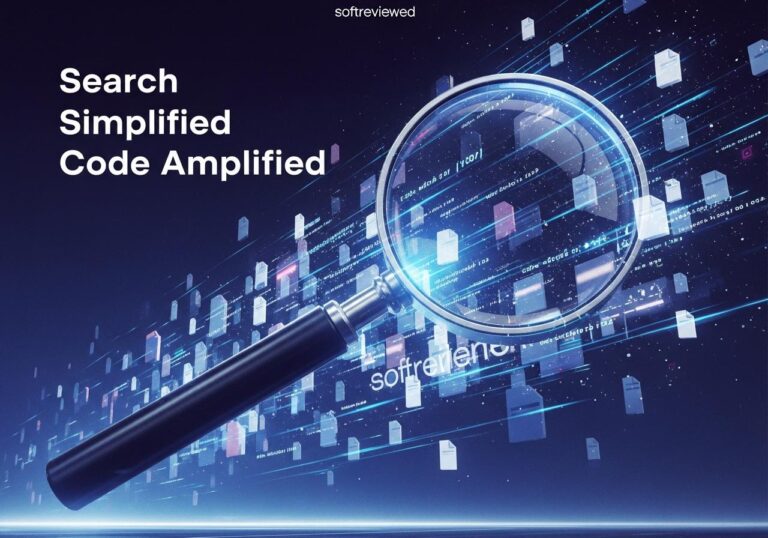Claude Sonnet: Performance at Scale
Delivering enterprise-grade AI with unmatched speed, cost-efficiency, and reliability
⚡ Performance Match at 1/3 the Cost
Matches Claude Sonnet 4’s performance at just 1/3 the cost while delivering 2X faster speed for coding, computer use, and agent tasks – making enterprise AI deployment economically viable at scale.
💻 Accelerated Coding Performance
Processes complex coding tasks up to 2X faster – demonstrated by building a dark mode toggle for a food delivery app in under 60 seconds, enabling rapid development and iteration.
⏱️ Optimized for Real-Time Applications
Specifically engineered for latency-sensitive applications like real-time customer service agents and chatbots where response time is critical, delivering seamless user experiences.
👁️ Enhanced Vision Capabilities
Supports advanced vision capabilities that unlock new use cases previously limited by cost/performance tradeoffs, enabling multimodal applications at an accessible price point.
🤖 Economical Multi-Agent Systems
Enables economically viable agent experiences and multi-agent systems for complex coding projects at scale, making sophisticated AI workflows practical for businesses of all sizes.
🌐 Global Production Deployment
Available via Amazon Bedrock’s global cross-region inference for production deployments across multiple geographic locations, ensuring consistent performance worldwide.
What Makes Claude Haiku 4.5 a Turning Point for AI Accessibility
Anthropic dropped a surprise on October 15, 2025, that has developers and business owners buzzing. Claude Haiku 4.5, their newest small AI model, delivers the same coding performance as Claude Sonnet 4—a model that was considered state-of-the-art just five months ago—but at one-third the cost and more than twice the speed.
Think about that for a moment. What required expensive, resource-heavy infrastructure in May 2025 now runs on a lightweight model that costs $1 per million input tokens and $5 per million output tokens (approximately ₹84 and ₹420 respectively). For comparison, Claude Sonnet 4 and 4.5 cost $3 per million input tokens and $15 per million output tokens.
This isn't just another incremental update. Claude Haiku 4.5 represents a shift in how AI companies are thinking about accessibility. Instead of making models bigger and more expensive, Anthropic has made powerful AI faster and cheaper, opening doors for startups, small businesses, and developers who previously couldn't afford premium AI capabilities.
Breaking Down the Numbers: Performance That Speaks for Itself
Claude Haiku 4.5 scored 73.3% on SWE-bench Verified, a tough coding benchmark that tests real-world software engineering skills. That's on par with Claude Sonnet 4, GPT-5, and Gemini 2.5 Pro. In Terminal-Bench, focused on command-line tasks, it hit 41%—again matching its bigger siblings.
But here's where it gets interesting. Haiku 4.5 actually outperforms Sonnet 4 in computer use tasks, the ability to navigate websites, click buttons, and complete multi-step workflows. On OSWorld, a benchmark measuring AI performance on real computer tasks, it demonstrates the kind of capability that was previously limited to much larger models.
The speed advantage is equally impressive. Haiku 4.5 processes tasks more than two times faster than Sonnet 4, making it perfect for situations where every second counts—customer service chatbots, real-time coding assistants, or rapid prototyping sessions.
The Secret Sauce: How Small Models Match Big Performance
You might wonder: how does a smaller model achieve the same results as a much larger one? The answer lies in a technique called knowledge distillation.
Imagine a brilliant professor (the teacher model) who has spent years mastering complex subjects. Instead of requiring every student to spend the same years learning everything, the professor teaches the most important concepts, patterns, and problem-solving approaches. The student (the smaller model) learns to replicate the teacher's decision-making process without needing to store all the raw information.
In technical terms, distillation trains the smaller "student" model using both regular training data and the "soft" probability distributions from a larger "teacher" model. These soft labels contain richer information than simple right-or-wrong answers. They show the teacher's confidence levels and the relationships between different possible answers.
This approach lets companies like Anthropic create models that maintain strong performance in specific areas—like coding for Haiku 4.5—while dramatically reducing size, cost, and processing time. The tradeoff is that smaller models may have less broad general knowledge compared to their larger counterparts, but for focused tasks, they can match or exceed bigger models.
Where Claude Haiku 4.5 Shines: Real-World Applications

Customer Service That Actually Responds Instantly
Traditional customer service AI often felt sluggish. You'd ask a question, see "typing…" for several seconds, then get a response. Haiku 4.5's speed changes that equation. Companies can now deploy chatbots that feel as responsive as talking to a human, handling thousands of queries simultaneously without lag.
Major retailers and service providers are already testing Haiku 4.5 for 24/7 support, where it answers FAQs, tracks orders, troubleshoots common issues, and escalates complex problems to human agents—all while maintaining natural conversation flow.
Coding Assistants That Keep Up With Your Thoughts
For developers, nothing breaks concentration like waiting for an AI coding assistant to finish generating suggestions. Haiku 4.5's combination of speed and coding accuracy makes it ideal for pair programming—working alongside you as you write code, offering real-time suggestions, catching bugs, and explaining complex functions on the fly.
Users of Claude Code, Anthropic's coding tool, report that Haiku 4.5 makes multi-agent projects and rapid prototyping markedly more responsive. The model handles code refactoring, documentation generation, and debugging tasks that previously required slower, more expensive models.
Multi-Agent Systems That Actually Work
Here's where things get creative. Anthropic suggests using Claude Sonnet 4.5 (their most powerful model) as the "coordinator" that breaks down complex problems into smaller tasks. Then, multiple instances of Haiku 4.5 can execute those subtasks simultaneously in parallel.
Picture this: You need to analyze a large codebase. Sonnet 4.5 identifies the main components and creates a plan. Then, five Haiku 4.5 agents work simultaneously—one analyzing database queries, another checking API endpoints, a third reviewing security practices, a fourth documenting functions, and a fifth running tests. What might take hours sequentially happens in minutes.
This parallel processing approach works for research too. Multiple Haiku 4.5 agents can scan different academic papers, synthesize findings, and compile literature reviews simultaneously, dramatically cutting research time.
Financial Analysis at Scale
Financial institutions need to monitor thousands of data streams—market signals, regulatory changes, portfolio risks—in real time. Haiku 4.5's speed and cost efficiency make it practical to deploy AI monitoring across massive datasets without breaking the budget.
Banks and investment firms can run continuous analysis that would be prohibitively expensive with larger models, identifying patterns and anomalies as they happen rather than in batch processing overnight.
The Technical Details You Need to Know
Model Specifications and Context Window
Claude Haiku 4.5 supports a 200K token context window, meaning it can process approximately 150,000 words in a single conversation. This is the same as Claude Sonnet 4, giving it enough memory to handle lengthy documents, extended conversations, or large codebases without losing track of earlier information.
For the first time in the Haiku family, Haiku 4.5 supports extended thinking—a hybrid reasoning mode where the model can either respond almost instantly or take time to work through complex problems step-by-step before answering. This feature was previously available only in larger models.
Where You Can Access It
Haiku 4.5 is available now across multiple platforms:
📌 Claude.ai web interface (free tier users get access)
📌 Claude Developer Platform API (use "claude-haiku-4-5" as the model ID)
📌 Amazon Bedrock for AWS cloud deployments
📌 Google Cloud's Vertex AI for Google Cloud users
📌 GitHub Copilot (rolling out in public preview for Pro, Pro+, Business, and Enterprise plans)
📌 Claude for Chrome browser extension
The wide availability means you can start testing Haiku 4.5 today, whether you're a solo developer or part of an enterprise team.
Pricing Breakdown and Cost Comparison
Let's break down what this pricing means in practical terms. Imagine you're running a customer service chatbot that handles 1 million input tokens (customer messages) and generates 1 million output tokens (AI responses) per day.
With Claude Haiku 4.5:
➡️ Daily cost: $1 (input) + $5 (output) = $6 (approximately ₹504)
➡️ Monthly cost: $180 (approximately ₹15,120)
With Claude Sonnet 4 or 4.5:
➡️ Daily cost: $3 (input) + $15 (output) = $18 (approximately ₹1,512)
➡️ Monthly cost: $540 (approximately ₹45,360)
That's a savings of $360 per month (approximately ₹30,240), or 67%, while maintaining similar performance for coding and agentic tasks. For businesses processing higher volumes, these savings multiply quickly.
Safety and Responsible AI: What Sets Haiku 4.5 Apart
Anthropic takes AI safety seriously, and the numbers back that up. In internal testing, Claude Haiku 4.5 showed a statistically significantly lower rate of misaligned behaviors compared to both Sonnet 4.5 and Opus 4.1, making it Anthropic's safest model yet.
The model receives an AI Safety Level 2 (ASL-2) rating, which indicates lower risk compared to the ASL-3 classification applied to more powerful models like Sonnet 4.5 and Opus 4.1. Anthropic specifically tested Haiku 4.5 for risks in chemical, biological, radiological, and nuclear (CBRN) domains and found especially low risk levels.
For businesses concerned about AI generating inappropriate content, violating policies, or producing biased outputs, these safety metrics provide concrete evidence of improved guardrails. The model demonstrates a 99%+ harmless rate in standard evaluations.
Understanding the Tradeoffs: When to Use Haiku vs. Sonnet vs. Opus
Anthropic offers three model sizes in the Claude 4 family, each serving different purposes. Understanding when to use each one helps maximize both performance and cost efficiency.
Use Claude Haiku 4.5 when you need:
✅ Fast response times for customer-facing applications
✅ Cost-efficient processing of high message volumes
✅ Strong coding assistance without heavy computational needs
✅ Multiple parallel agents working on subtasks simultaneously
✅ Real-time data monitoring and analysis
Use Claude Sonnet 4.5 when you need:
✅ The absolute best coding performance available
✅ Complex reasoning over extended periods (up to 30+ hours on single tasks)
✅ Deep domain knowledge in finance, law, medicine, or STEM fields
✅ Coordination of multi-agent systems
✅ Enhanced computer use and browser automation
Use Claude Opus 4.1 when you need:
✅ The deepest general knowledge and contextual understanding
✅ Comprehensive analysis requiring broad knowledge bases
✅ Highest quality creative writing and content generation
✅ Complex problem-solving across multiple domains simultaneously
Many users find success combining models—Sonnet or Opus for planning and complex reasoning, with multiple Haiku instances executing specific subtasks in parallel.
The Environmental Angle: Why Smaller Models Matter
AI's environmental impact has become a hot topic. Training and running large language models consumes enormous amounts of electricity, contributing to carbon emissions and straining power grids.
Smaller models like Haiku 4.5 address this concern directly. A large model with 405 billion parameters can consume approximately 6,706 joules of energy per query—equivalent to running a microwave for eight seconds. A smaller model with eight billion parameters might use only 114 joules per query.
While Anthropic hasn't released Haiku 4.5's exact parameter count, its efficiency gains translate directly to reduced energy consumption per task. For companies processing millions of AI queries daily, switching from larger models to Haiku 4.5 where appropriate can significantly reduce their carbon footprint.
UNESCO research suggests that using smaller, task-specific models can cut energy use by up to 90% compared to large general-purpose models, all while maintaining comparable performance on focused tasks. As businesses face increasing pressure to reduce environmental impact, model selection becomes not just a cost issue but a sustainability consideration.
Claude for Chrome: AI That Lives in Your Browser
One of the most exciting developments tied to Haiku 4.5's launch is the enhanced performance of Claude for Chrome, Anthropic's browser extension that's currently in limited preview.
This isn't just a chatbot in your browser sidebar. Claude for Chrome can see what you're looking at, click buttons, fill forms, navigate websites, and complete multi-step tasks on your behalf. With Haiku 4.5 powering the extension, these actions happen faster and more responsively than ever.
The extension now uses Sonnet 4.5 by default for complex tasks, but Haiku 4.5 handles many background operations and simpler interactions. This hybrid approach balances powerful reasoning with snappy performance.
Features include:
📌 Multi-tab functionality—drag tabs into Claude's group to let it view and interact with multiple tabs simultaneously
📌 Built-in knowledge of popular platforms like Slack, Google Calendar, Gmail, Google Docs, and GitHub
📌 Visual context sharing through screenshots and image uploads
📌 Notification system to alert you when tasks complete or require input
Anthropic is rolling out access gradually to 1,000 Claude Max plan subscribers initially, with plans to expand as they refine safety measures. The company has implemented defenses against prompt injection attacks, reducing success rates from 23.6% to 11.2%.
What Developers Are Saying: Early Feedback and Reviews
Early adopters have shared mixed but generally positive experiences with Haiku 4.5. On Reddit's ClaudeAI community, developers report:
"I'm interested to see how it handles coding tasks… Appreciate you sharing!" noted one user, expressing cautious optimism about the new model's practical applications.
Some developers find Haiku 4.5 performs better on documentation and simpler coding tasks rather than complex, multi-step programming challenges. This aligns with Anthropic's positioning—Haiku excels at specific, focused tasks where speed matters, while Sonnet remains superior for complex reasoning and extended coding sessions.
One developer observed: "It seems rather underwhelming based on some brief evaluations. It could potentially serve well for documentation or similar purposes." This highlights an important point: Haiku 4.5 isn't meant to replace Sonnet 4.5 for everything. It's a specialized tool that shines in specific scenarios.
GitHub users testing Haiku 4.5 in Copilot preview generally appreciate the improved response times in Visual Studio Code, particularly for inline suggestions and quick code explanations. The model integrates smoothly with existing workflows without requiring developers to change their habits.
The Bigger Picture: Industry Trends Toward Efficient AI
Claude Haiku 4.5 arrives at a moment when the entire AI industry is reconsidering the "bigger is always better" philosophy. For years, progress meant larger models with more parameters, trained on bigger datasets with more compute power.
But that approach has hit practical limits. Training costs have skyrocketed—GPT-4 reportedly cost $50-100 million to train, while DeepSeek demonstrated that effective models can be trained for $5.6 million. Energy demands are straining data centers. And many businesses simply can't justify the costs of running massive models for every task.
The shift toward smaller, specialized models represents a maturation of AI technology. Instead of one giant model trying to do everything, we're seeing ecosystems of models—some small and fast for specific tasks, others large and powerful for complex reasoning, all working together.
This trend aligns with predictions from AI researchers that by 2026, we'll see:
➡️ More focus on efficiency and specialized models rather than pure scale
➡️ Increased use of distillation and compression techniques
➡️ Multi-agent systems becoming standard practice
➡️ Greater accessibility of advanced AI for smaller organizations
➡️ Environmental considerations driving architecture decisions
Haiku 4.5 exemplifies this direction—proving that smart architecture and training approaches can deliver frontier-level performance without frontier-level costs.
Practical Steps: Getting Started with Claude Haiku 4.5
Ready to try Haiku 4.5 for yourself? Here's how to get started based on your needs:
For Casual Users and Content Creators
Visit Claude.ai and sign up for a free account. Haiku 4.5 is now the default model for free tier users, so you'll automatically have access. Try asking it to:
➡️ Summarize lengthy articles or research papers
➡️ Generate content ideas for your blog or YouTube channel
➡️ Debug code snippets or explain programming concepts
➡️ Draft emails, social media posts, or scripts
For Developers Building AI Applications
Sign up for the Claude Developer Platform and obtain an API key. Use the model ID "claude-haiku-4-5" in your API calls. The documentation provides code samples in Python, JavaScript, and other languages.
Start with simple integrations—a chatbot, document analyzer, or coding assistant—then expand to multi-agent architectures as you understand the model's strengths and limitations.
For GitHub Copilot Users
If you're on Copilot Pro, Pro+, Business, or Enterprise, watch for Haiku 4.5 to appear in your model picker within Visual Studio Code. Enable it through the one-time prompt or manage models in settings.
Test it for different coding tasks—inline suggestions, chat explanations, code reviews—and compare performance to other models available in Copilot.
For Enterprise Teams
Contact Anthropic about deployment through Amazon Bedrock or Google Cloud's Vertex AI if you're already using those platforms. Enterprise administrators can enable Haiku 4.5 through Copilot settings for their organizations.
Consider running cost-benefit analyses comparing Haiku 4.5 to your current AI solution, focusing on tasks where speed and volume matter more than deep reasoning.
Looking Ahead: What This Means for AI's Future
Claude Haiku 4.5 represents more than just another model release. It signals a fundamental shift in how we think about AI deployment.
The old model—use the biggest, most powerful AI for everything—is giving way to a more nuanced approach. Organizations will increasingly run portfolios of AI models, matching each task to the right tool. Need deep reasoning and extensive knowledge? Use a large model. Need fast responses at scale? Use a small model.
This specialization mirrors how human teams work. You don't ask your CEO to answer every customer service email. Different roles require different expertise and response times. AI systems are evolving toward similar division of labor.
For content creators and small businesses, models like Haiku 4.5 democratize access to powerful AI. What was prohibitively expensive six months ago is now affordable for solo developers and bootstrapped startups. This accessibility will likely accelerate AI adoption across industries that haven't yet integrated these technologies.
The combination of lower costs, reduced environmental impact, and maintained performance creates a compelling case for rethinking AI infrastructure. Businesses currently running everything on expensive large models should evaluate whether task-specific smaller models could handle significant portions of their workload at fraction of the cost.
Wrapping Up the Haiku 4.5 Story
Anthropic's Claude Haiku 4.5 proves that AI progress isn't just about making models bigger. Sometimes the real innovation comes from making powerful capabilities more accessible, affordable, and efficient.
By delivering Claude Sonnet 4 performance at one-third the cost and more than double the speed, Haiku 4.5 opens doors for developers and businesses that couldn't justify previous AI expenses. The model excels at coding, customer service, multi-agent workflows, and real-time applications—all while maintaining Anthropic's strong safety record.
Whether you're a solo developer building your first AI-powered app, a content creator experimenting with AI tools, or an enterprise team looking to optimize AI costs, Haiku 4.5 deserves serious consideration. It's not the right choice for every task, but for focused applications where speed and cost efficiency matter, it might just be perfect.
The AI landscape keeps evolving. Five months ago, Sonnet 4 was cutting-edge. Today, Haiku 4.5 matches it at a fraction of the cost. What will be possible five months from now? If the trend continues, advanced AI capabilities will keep getting faster, cheaper, and more accessible—and that benefits everyone.







